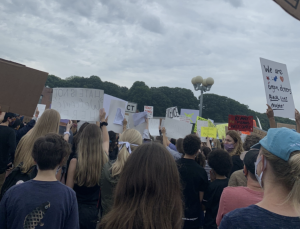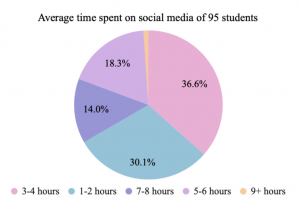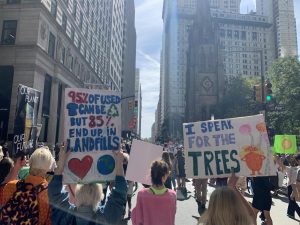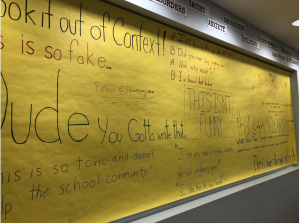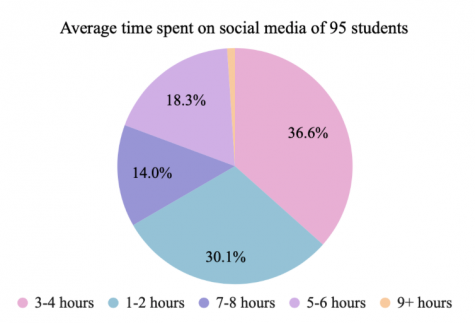Instagram transforms to platform for political conversations
With a global pandemic forcing communities into lockdown, polarization during the presidential election and civil unrest regarding systemic racism, 2020 has created the perfect storm to transform Instagram, putting a spotlight on individualistic political outspokenness. While feeds are still saturated with selfies and sunset pics, the social media overton window has observably moved to contain more candid, self-opinionated, politically relevant posts and less of a highlight reel of one’s life.
Instagram has been particularly popular because of its ease in spreading messages quickly. Its accessible design includes the explore page interface, 24-hour stories, IGTV, live videos and regular posts. Social media’s personalization abilities have helped users seek out posts regarding issues important to them. Users can choose which accounts to follow and which posts to reshare, helping them to curate their feed and foster activism in the form of conversations and productive debates.
“Sharing my beliefs on Instagram is very empowering as it allows me to educate others and have discussions surrounding politics with people I never would have otherwise spoken to,” Ali Korn ’21 said.
Korn is particularly outspoken about women’s rights, the Israeli-Palestian conflict, antisemitism and minority oppression, using Instagram stories to educate her following accounts and give them places to donate.
The rise in political Instagram engagement was most noticeable in late-May after the death of George Floyd. Elise Eisenberger ’24 accredits the ascent of the Black Lives Matter movement last spring to her own political agenda on social media.
“Although many of us were aware of injustices in the world, it wasn’t super relevant to us,” Eisenberger said. “The BLM movement really opened a lot of our eyes [to] the fact that it is so important to speak on issues, especially if they don’t directly apply to us.”
Eisenberger also noted that an apparent increase in celebrity involvement helped propel the imperative conversations that young people need to be having. One of her favorite politically active influencers is 18-year-old Amelie Zilber who uses her platform to educate her 1.7 million followers on issues including voting rights, Chinese concentration camps and the devastation in Lebanon. Zilber even created a separate Instagram platform, @twominutetimes, to provide her fanbase with easy access to global breaking news as well as links for donations and opportunities to get involved.
“Celebrities with a lot of money are starting to do things, even if they don’t really feel passionate about said topic, such as donating and speaking out to millions of people,” Eisenberger said.
Similarly, Benji Clachko ’21 believes that whether Instagrammers with a big following feel passionate behind their politically active posts or not, it nonetheless helps advance the conversation.
“Fanbases are really impressionable, and celebrities calling attention to political [and] human rights issues makes their fanbase much more likely to pay attention,” Clachko said.
For him, the most important aspect of being politically engaged on Instagram is spreading and receiving materials to sign petitions, and donating or calling senators and representatives in an area’s local government. However with this, comes the issue of performative activism, activism done solely for the purpose of improving social capital rather than genuine devotion to an issue.
“I see so much meaningless content on Instagram and Tik Tok and it’s so obvious there is nothing of substance in what they are saying,” Clachko said. “They are using the misfortunes of others to gain followers [and] make themselves look good.”
Eisenberger feels that activism without true dedication still helps spread awareness, so it is not inherently bad, but performative activism is still an issue and should be cause for self-evaluation.
“If you are someone who knows that you aren’t really passionate about what is happening, you should take a step back and learn about what you are posting,” Eisenberger said.
In addition to the Black Lives Matter movement, the COVID-19 lockdown was a huge instigator that propelled involvement from younger generations.
“At the beginning of quarantine, I spent a big part of my new free time reading up and educating myself about the upcoming election, and decided to find and make infographics to share with my small following,” Amanda Kline ’21 said.
Since lockdown, Kline has used her Instagram account to provide her peers with GoFundMe links to donate to, petitions to sign and phone numbers to call to demand justice.
As the election commotion fades and the Black Lives Matter movement becomes less prominent in the media, many call into question the temporality of this engagement.
“I don’t think that social media will be like this permanently, and it’s already transitioning back to ‘normal,’” Kline said. “I think, and hope, that as we go back to posting our normal stuff we continue to share important information alongside it.”
Korn feels that the future of Instagram and the sustainability of political advocacy in social media relies heavily on the coexistence of aesthetic posts and activism posts. The responsibility to be engaged and aware solely falls on the individual to seek out information.
“The content of my Instagram feed has shifted to include everything from political and social justice to Sunday brunch spreads,” Korn said. “I think it is important for people to understand that what they choose to share on social media has meaning.”

As a writer, lacrosse player and cheerleader, Remy Teltser ’21 has always explored a variety of interests. After taking Intro to Journalism last year,...














































